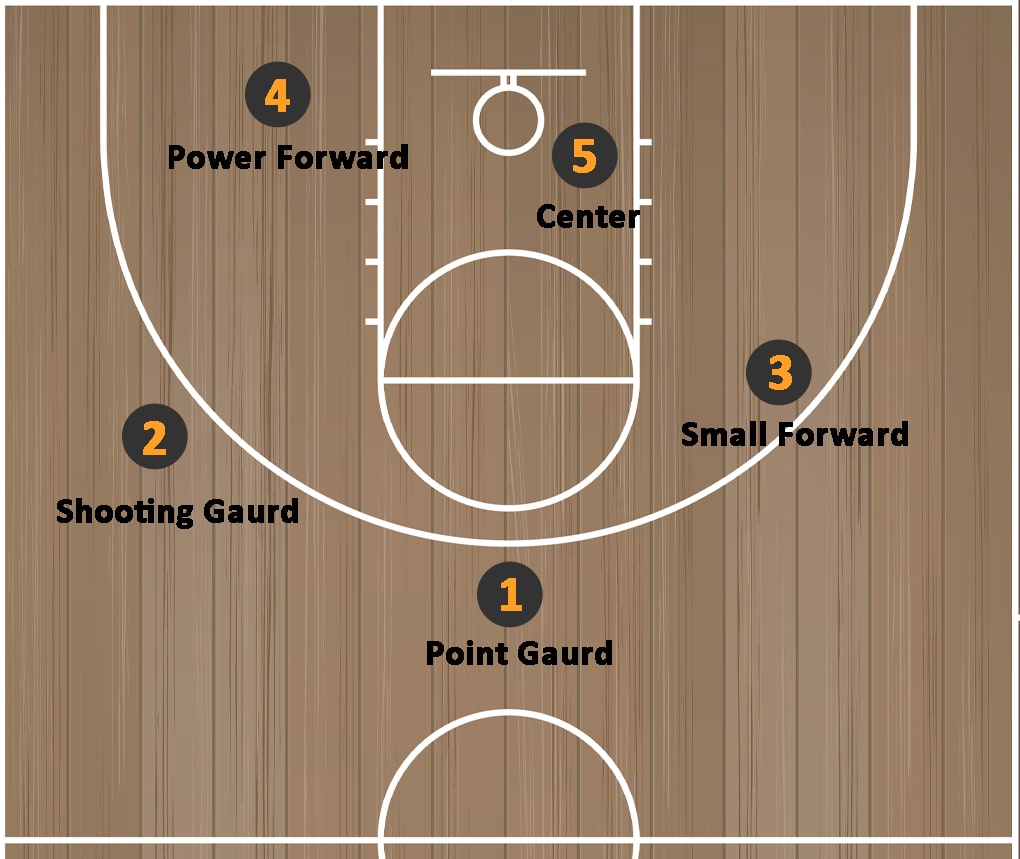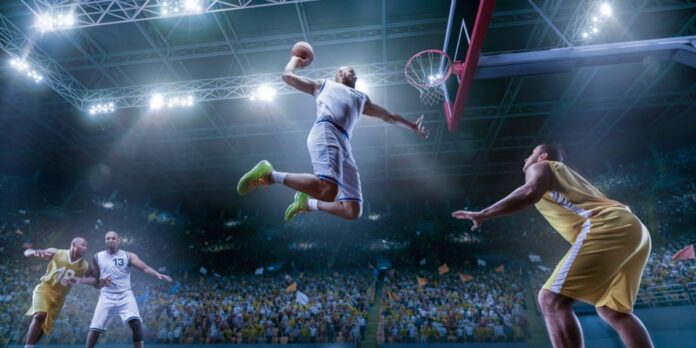Basketball is a fast-paced team sport. It needs skill, strategy, and athleticism. At the heart of the strategy are the basketball positions that define each player’s role on the court. These positions are key to how teams operate, both on offense and defense. Each position has distinct responsibilities and skills. Understanding basketball positions helps to appreciate the nuances of the game and the strategic decisions made by coaches and players.
Traditional basketball teams had five positions: point guard, shooting guard, small forward, power forward, and center. Each position serves a specific purpose. They each contribute to a team’s performance. These positions’ roles have evolved over time. Yet, they are still fundamental to the sport. Recently, basketball has shifted to more versatile and flexible styles of play. “Positionless” basketball has emerged. It expects players to adapt to multiple roles and situations on the court. This evolution shows the game’s constant innovation. It is more exciting than ever.
Traditional Basketball Positions
The five traditional basketball positions are the basis of team strategy. Each has distinct roles and responsibilities. These positions cover all aspects of the game. They include orchestrating plays, scoring, and defending.

Point Guard (PG)
The point guard, or “floor general,” is key to the offense. This player controls the ball and makes key decisions on the court. Point guards are usually the shortest players on the team. But, they have great ball handling and leadership skills.
Key Skills and Attributes:
- Ball Handling: Exceptional dribbling skills to navigate through defenses and avoid turnovers.
- Court Vision: Ability to see and anticipate movements on the court, making precise passes to open teammates.
- Decision-Making: Quick thinking to make split-second decisions about when to pass, shoot, or drive.
- Leadership: Strong communication skills and the ability to motivate and guide teammates.
- Defensive Responsibilities: Typically defends the opposing team’s point guard, requiring quick lateral movement and defensive awareness.
- Must be adept at stealing the ball and disrupting the opponent’s offensive flow.
Famous Point Guards:
- Magic Johnson: Known for his extraordinary passing ability and leadership during the Los Angeles Lakers’ “Showtime” era.
- Chris Paul: Renowned for his precise playmaking, defensive tenacity, and leadership on and off the court.
- Stephen Curry: Revolutionized the position with his exceptional shooting range and ability to score from anywhere on the court.
Shooting Guard (SG)
The shooting guard is primarily responsible for scoring points, particularly from long-range shots. Working alongside the point guard, they create offensive opportunities. They are often tasked with defending the opponent’s best perimeter player.
Key Skills and Attributes:
- Shooting: Excellent accuracy from both mid-range and three-point distances.
- Agility: Quick footwork and the ability to move effectively without the ball to create scoring opportunities.
- Defense: Strong defensive skills to guard against other top scorers.
Famous Shooting Guards:
- Michael Jordan: Widely regarded as one of the greatest players of all time, known for his scoring, defense, and competitiveness.
- Kobe Bryant: Celebrated for his scoring prowess, footwork, and ability to perform under pressure.
- Ray Allen: Renowned for his exceptional shooting ability and clutch performances in critical moments.
Small Forward (SF)
The small forward is a versatile player. He is the team’s all-around contributor. This position needs scoring, defense, and playmaking. So, small forwards must adapt to various roles as needed.
Key Skills and Attributes:
- Versatility: Ability to contribute in multiple areas, such as scoring, rebounding, and defending.
- Athleticism: Strong physical capabilities to excel in both offensive and defensive plays.
- Shooting and Driving: Proficient in shooting from long range and driving to the basket.
Famous Small Forwards:
- LeBron James: Known for his versatility, basketball IQ, and ability to play multiple positions effectively.
- Larry Bird: Celebrated for his shooting, passing, and competitiveness during his time with the Boston Celtics.
- Kevin Durant: Recognized for his scoring ability, height, and skill set that make him a matchup nightmare for opponents.
Power Forward (PF)
The power forward is vital to both offense and defense. They often play near the basket. This player must be strong and aggressive. They must score in the post, grab rebounds, and be physical on the court.
Key Skills and Attributes:
- Strength and Toughness: Ability to battle in the paint for rebounds and scoring opportunities.
- Mid-Range Shooting: Capability to score from mid-range, extending the defense.
- Defensive Prowess: Strong defensive skills to guard against opposing forwards and centers.
Famous Power Forwards:
- Tim Duncan: Known for his fundamental skills, defensive ability, and leadership with the San Antonio Spurs.
- Karl Malone: Renowned for his scoring, rebounding, and physical play during his career with the Utah Jazz.
- Kevin Garnett: Celebrated for his intensity, defensive skills, and versatility as a player.
Center (C)
The center is usually the tallest player. They play near the basket to protect the rim and score in the paint. Centers are vital for rebounding. They also block and alter opponents’ shots.
Key Skills and Attributes:
- Height and Strength: Essential for dominating the paint and controlling the boards.
- Rebounding: Ability to secure rebounds on both ends of the court.
- Defensive Anchor: Provides a strong defensive presence to deter opponent scoring attempts.
Famous Centers:
- Shaquille O’Neal: Known for his dominant physical presence and scoring ability in the paint.
- Kareem Abdul-Jabbar: Celebrated for his scoring prowess, particularly with his signature skyhook shot.
- Hakeem Olajuwon: Renowned for his footwork, defense, and scoring ability as one of the best centers in NBA history.
Conclusion
Understanding basketball positions is essential for appreciating the strategic depth of the game. Each position—point guard, shooting guard, small forward, power forward, and center—has a unique role. It is vital to the team’s success. These positions require a diverse set of skills. They must orchestrate plays, score points, defend, and rebound.
Whether you’re a fan, player, or coach, knowing these positions will enhance your appreciation of basketball. It is a game of strategy and remarkable player talent. As teams and players adapt to new trends, the sport’s excitement and innovation depend on each position’s essence.







